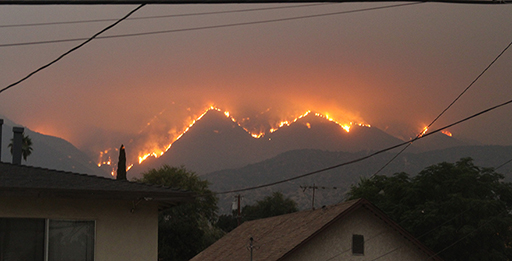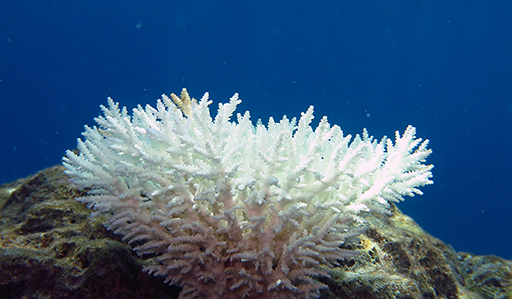4 Making change globally
There are so many international movements for change, campaigning individuals and organisations, and examples of relevant issues, that this section will take a slightly different tack and focus on one issue in particular: climate crisis.
Thinking about climate crisis
Climate crisis is an example of a social and political issue which crosses borders. It is a ‘global challenge’. Indeed, some people argue that we need to use the word ‘crisis’ to reflect the seriousness of the challenge, rather than climate ‘change’.
A global challenge is a very big problem that affects many people in a lot of different countries, the solution to which requires concerted action across national boundaries. This definition echoes the way in which the term ‘global challenge’ started to be used by policy makers in the first decades of the 21st century. A notable example can be found in the United Nations (UN) Sustainable Development Goals (SDGs). The UN describes those goals as seeking to address the ‘global challenges we face’ by offering a ‘blueprint to achieve a better and more sustainable future for all’ (United Nations n.d.). The challenges the SDGs highlight – things such as poverty and hunger – do not affect everyone everywhere but, in common with the definition of global challenge above, they do affect many people in a lot of different countries and their solution requires action across national boundaries.
What happens locally cannot be divorced from wider contexts, but there is not a simple, one-way relationship between the global and the local, with the global always dominating what happens locally. Instead, it is better to think of the local and the global as continually shaping each other. In particular, global forces are persistently resisted, refashioned and repurposed by people in their localities and these actions can ripple out and have global consequences.
Someone seeking to make political and social change needs to consider:
- Whether the issue is local and/or global and in what way.
- Which person/government/organisation is best placed to make change in that context.
Activity 4: Local/global relationships
In Activity 1 you were asked to identify whether there are any national or international issues that you are passionate about. Take this even further by considering the local/global dimension. Is your issue an example in which what happens locally is shaped and influenced by something happening elsewhere in the world? Or is it an example in which a local outcome is shaped and influenced by a wider social, economic and political context or environment? You can write your answer in the text box provided.
Campaigning about climate crisis
What can or should we do about climate crisis? Professor Mark Maslin writes in How to Save the Planet: The Facts, ‘We are not all equally liable for the mess we find ourselves in.’ He presents these figures to back up his point:
- The richest 10% of the world’s population emit 50% of carbon pollution into the atmosphere.
- The richest 50% of the world’s population emit 90% of carbon pollution into the atmosphere.
- The poorest 3.9 billion people have contributed just 10% of the carbon pollution in our atmosphere (Maslin, 2021).
Some people have felt it necessary to take action against climate crisis. One important figure is Greta Thunberg. In 2018 she began a solitary protest against climate change outside the Swedish Parliament. Her demands were simple: cut down CO2 emissions immediately in order to save the planet. Her protest inspired schoolchildren from across the world to act, like the ‘Fridays for Future’ movement.
For Greta Thunberg, acting against climate crisis was a matter of principle as much as doing everything to protect the future. She felt anger, shock and sadness at what was happening:
‘We saw these horrifying pictures of plastic in the oceans and floodings and so on, and everyone was very moved by that. But then it just seemed like everyone went back to normal … And I couldn’t go back to normal because those pictures were stuck in my head. … When everyone else seems to just compromise … I want to walk the talk, and to practice as I preach.’
That same year she also gave a speech to policymakers at the World Economic Forum in Davos that went viral:
‘I don’t want you to be hopeful.
I want you to panic.
I want you to feel the fear I feel every day.
And then I want you to act.
I want you to act as you would in a crisis.
I want you to act as if our house is on fire.
Because it is.’
Greta Thunberg is far from the only climate striker out there. But she is one of the most well-known and recognisable. She has a powerful moral outlook that views the climate challenge in terms of simple right and wrong. She also shows that individuals can do something about global challenges like climate crisis. As she puts it, ‘no one is too small to make a difference’ (Thunberg 2021: 8).
Greta Thunberg has become a symbol of a much wider movement around the world, involving tens of thousands of young people going on strike and demonstrating in the streets against climate crisis. People are using the everyday technology that they have access to (such as phones) to communicate and organise those demonstrations, meet up with other people, and to take photos and videos of actions to spread the word on social media.
She is an example of how an individual can work with others to influence change on a global level. You can read more about how she created change in Section 6.1 Inspirations.


